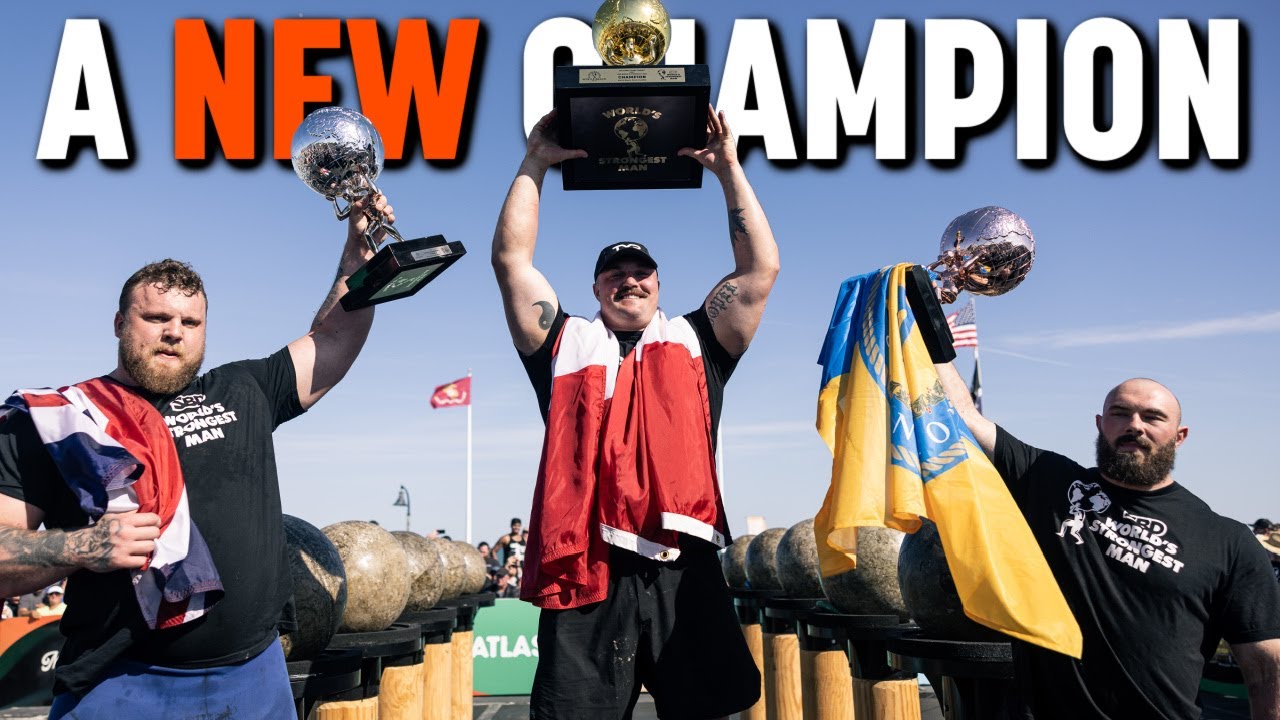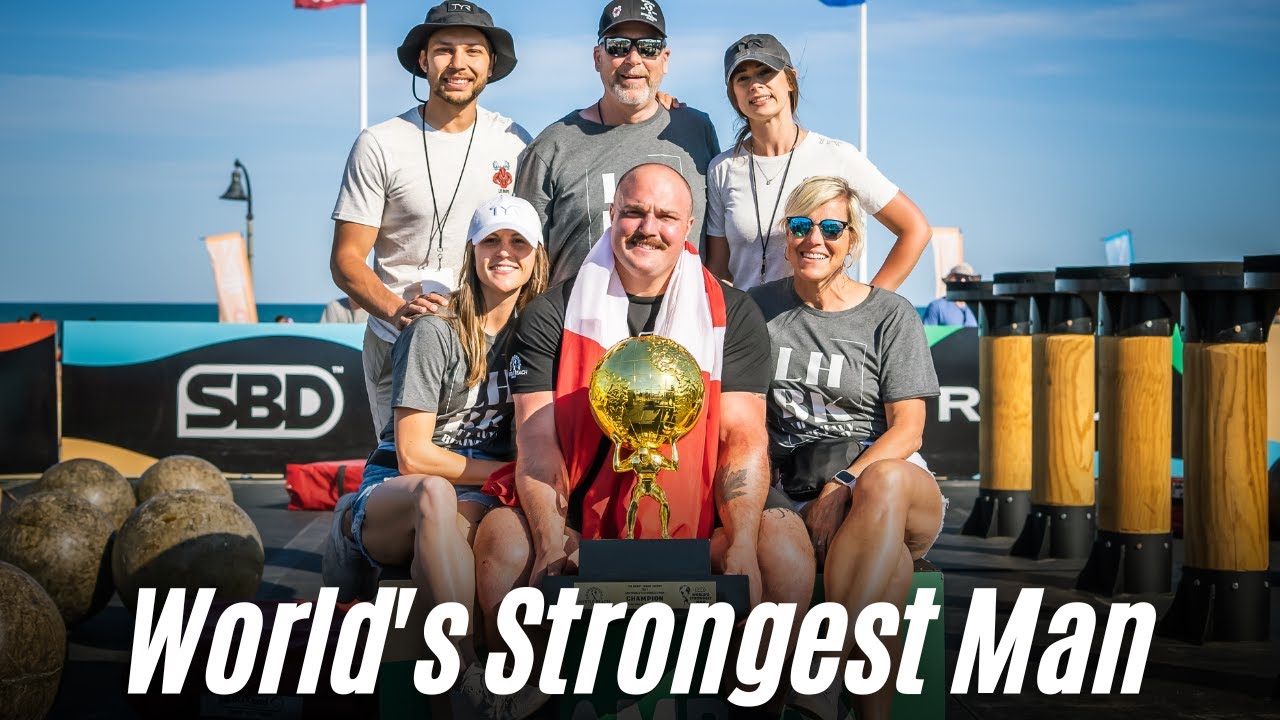Originally Posted At: https://breakingmuscle.com/feed/rss
This year, the Masters Olympia will return after an 11-year absence, taking place in Cluj-Napoca, Romania on Aug. 26-27, 2023. It will feature 10 competitive divisions and exclusively showcase bodybuilding athletes who are at least 40 years of age. With the early-April application process finished, it is now clear who will be traveling to Eastern Europe this coming summer.
On Apr. 25, 2023, an Olympia TV YouTube video featuring Jay Cutler and other bodybuilding figures like Terrick El Guindy, Steve Weinberger, and Alina Popa revealed the complete roster for the 2023 Masters Olympia. The overall prize purse for the participating competitors will be $229,000.

The headline division of the contest might be the Men’s Open class. Recent months have seen speculation about athletes such as Cutler, Johnnie Jackson, and Dexter Jackson (the last Masters Olympia champion in 2012) potentially joining the competition. As confirmed by this roster reveal, the seasoned veterans, who are in the midst of their respective retirements, will not feature at the 2023 Masters Olympia.
However, an established veteran and active titan in the main Olympia field, Kamal Elgargni, is now confirmed to be part of the Masters Olympia roster. Elgargni is most notably coming off a third-place result in the 212 division at the 2022 Mr. Olympia. He will compete in the Men’s Open at the return of the Masters Olympia. Elgargni may maintain this competitive set-up to prepare for the upcoming 2023 Mr. Olympia. The athlete previously clarified this would be his plan to stay consistent with his training and nutrition.
2023 Masters Olympia Rosters | Overview
Here’s a complete rundown of every division’s roster at the 2023 Masters Olympia.
Men’s Open
- Kamal Elgargni
- Logan Robson
- Marek Olejniczak
- Maxx Charles
- Michael Ely
- Michael Lynn
- Philip Clahar
- Robert Burneika
- Fred Smalls
- Joseph Piersante
- Joshua Lenartowicz
- Ken Jackson
- Ron Stevens
- Rusty Jeffers
- Sergio Lima
- Slavoj Bednar
- Tony Lagrene
- Vincent Galanti
- Vladimir Agrinskiy
212
- Anwar Darwish Ali
- Derik Farnsworth
- Bola Ojex
- Ahmed Fawzi
- Fernando Noronha De Almeida
- David Henry
- Jeff Williamson
- Hidetada Yamagishi
- Jicheng Qian
- Jonni Shreve
- Jim Everton
- Mason Butt
- Milton A. Martinez
- Ryan Walters
- Zohir Mihoubi
- Steve Thayer
- Ricardo Plata Duran
- Wayne Williams
Men’s Physique
- Adon Marcus
- Andrea Mosti
- Anton Antipov
- Byron Ross
- Arya Saffaie
- Michael Ferguson
- Myron Griffin
- Sharif Reid
- Terrence Teo
- Dajuan Freeman
- David Odom
- Everett Davis
- Everton Ribiero
- George Brown
- Harlan Taylor
- Joshua Petrecky
- Kenyon Leno
- Kevin Reeder
- Marcell Shippen
- Youcef Djoudi
Classic Physique
- Dawid Geler
- Dion Harris
- Ali Emre
- Esteban Smith
- Darrem Charles
- Alex Cambronero
- Eric Perkins
- Greg Rando
- Michel Perez
- Javier Martinez
- Luis Garcia Martinez
- Kelvin Hinde
- Olushomo Oni
- Richy Chan
- Ross Caesar
- Vladimir Markov
- Shanti Mitchell
- Peter Sciallo
- Thomas Connelly
Women’s Bodybuilding
- Cheryl Mears
- Abi Jimenez
- Donna Salib
- Evangelina Guzman
- Barbara Moojen
- Jacqueline Fuchs
- Marcela Venegas
- Dana Shemesh
- Leah Dennie
- Michelle Brent
- Maria Segura
- Lori Conley
- Silvia Matta
- Vera Mikulcova
- Reshanna Boswell
- Virginia Sanchez
- Tananarive Huie
Women’s Physique
- Caroline Alves Dos Santos
- Heather Grace
- Ivie Rhein
- Birgit Andersch
- Jennifer Taylor
- Alida Opre
- Candice Carr
- Nathalee Thompson
- Manuella Monteiro
- Joanna Romano
- Larissa Araujo De Lima
- Lenore Gregson
- Stephanie Frederickson
- Maria Liberman
- Oksana Piari
- Robin Mays
- Uta Koehler-Spitzbart
- Susan Graham
- Tanya Chartrand
- Suzanne Davis
Figure
- Corrie Morales
- Dee Jackson
- Dorota Ogonowska
- Georgina Lona
- Jennifer Reece
- Alissa Carpio
- Her Eun
- Gina Palma
- Jessica Baltazar
- Jessica Reyes Padilla
- Kim Clark
- Martina Yabekova
- Roberta Visintainer
- Larissa Penaloza
- Shelace Shoemaker
- Stella Miliani
- Veronica Gallego
- Zulfiya Bityeva
- Thais Werner
- Yelena Larina
Fitness
- Babette Mulford
- Debbie Fowler
- Maria Laura Cerbelli
- Marta Aguiar
- Minna Paljulahti
- Sally Kendall-Williams
- Stacy Simons
- Stephanie Jones
- Tamara Vahn
Bikini
- Aneta Szoltysek
- Christy Brown
- Geri Lara-Berger
- Ayleen Santander
- Gigi Amurao
- Angela Ruscilli
- Janine Herrera
- Chelan Nour
- Nucia Freitas Samo
- Elisangela Angell
- Abbi Gaetano
- Larissa Godoi
- Jessica Wilson
- Michelle Hurst
- Susan Price
- Kerryne Henich
- Merica Abbado
- Nichole Guggia
- Patricia Lloyd
- Ruth Montes
- Nicole Jennifer Johnson
Wellness
- Carly Thornton
- Dani Treiger
- Anzhelika Ispodnikova
- Clarissa Sanchez
- Casey DeLong
- Joann Norwood
- Cinzia Massaro Clapp
- Elizabeth Williams
- Nerilde Garcia
- Flora Conte
- Houda Hmini
- Synara Santana
- Simara Walter
- Alessandra Pinheiro
- Liliana Velez Marin
- Oana Marinescu
- Nicollette Burns
- Tania Viegas
The return of the Masters Olympia means some of the more experienced bodybuilders in the sport get the chance to shine on a stage again. Who actually poses well and thrives won’t be determined until late August in Romania.
Featured Image: @ifbb_pro_kamal_elgargni on Instagram
The post 2023 Masters Olympia Roster Revealed appeared first on Breaking Muscle.

 (@carolalves_pro)
(@carolalves_pro)

 For now classes are 6pm and 640pm at 2840 Wildwood st in the Boise Cloggers studio.
Book your class NOW!
click this ==>
For now classes are 6pm and 640pm at 2840 Wildwood st in the Boise Cloggers studio.
Book your class NOW!
click this ==>








